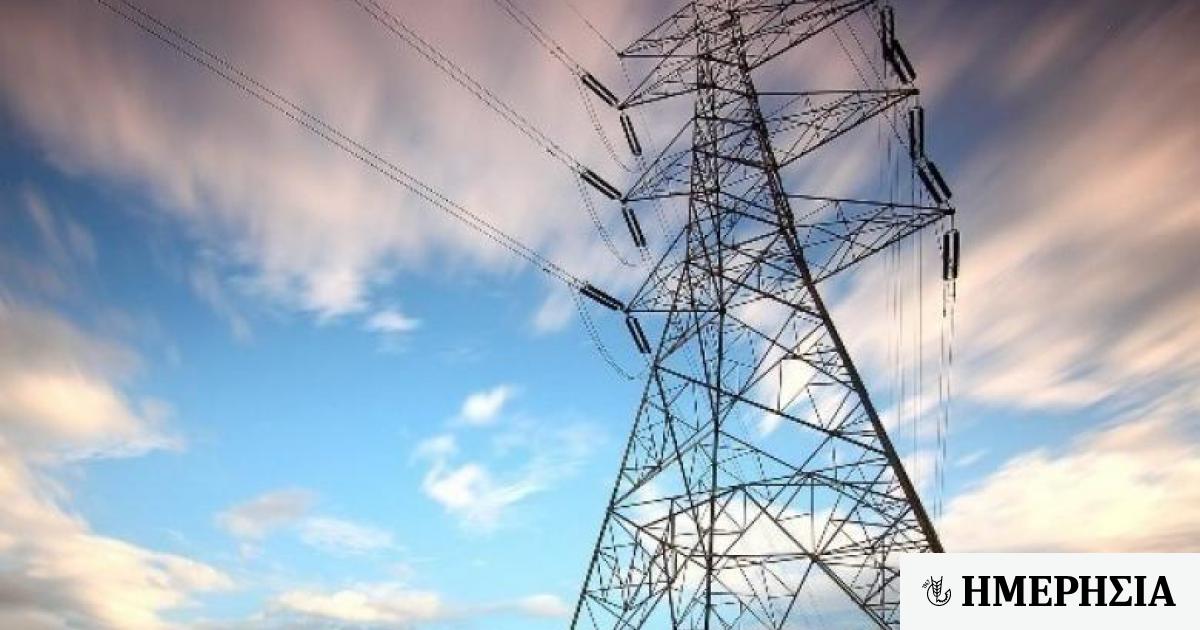
New records were set in 2023 energy market, Achieving an increase in the penetration of renewable sources but also Reducing consumption Despite the growth of the economy and the decline in prices compared to the peak of the energy crisis.
As ADMIE President and Managing Director Manos Manousakis told APE-MBE, “green” production, coupled with large hydropower plants, Last year it was 57% of the total (47.9% from renewables and 9.09% from hydro), breaking the previous record of 2022.
Perform it This is due to investments in new units Generating electricity from renewable sources, as well as in Developing new networks They are required for “green” energy circulation.
16 new achievements in 2023
In general, according to officials' data processed by Green Tank and provided by APE-MPE, In 2023, the energy market achieved 16 new milestones Which – apart from the decrease in consumption – is mainly related to the increased participation of renewable energy sources, the limited participation of mineral resources in the energy balance, the corresponding increase in renewable energy sources and the shift of consumers towards self-energy production solutions.
For example, Domestic consumption of natural gas decreased by 10.1% in 2023. the Electricity demand decreased in the eleventh month by 2.9% (Electricity demand would normally be even lower compared to the corresponding period in 2020, the first year of the pandemic when the quarantine was implemented), while Liquid fuel consumption (gasoline and diesel) also decreased by 7%. According to data from the Federation of Petroleum Trade Companies (SEEPE).
“Despite the decline in energy prices in 2023, Greece continued to reduce electricity and gas consumption. This trend, combined with the continued development of renewable energy sources, especially by citizens through self-generation systems, reinforces the changes in energy behavior that have begun,” he added. During the crisis and represents hope for a more decisive shift of the country's energy model towards sustainability.Monkey-MPE Green Tank Energy Policy Analyst Nikos Mantzaris.
Detailed developments by energy market sector according to Green Tank analysis:
Power generation
Until December 2023:
1) 672 hours (or 28 days or 7.67% of the year) Greece operated without any lignite.
2) Lignite production in 2023 was the lowest since the 1970s. It contributed just 4.5 TWh, 15% below the previous low of 5.3 TWh in 2021.
3) Mineral gas “decline” in power generation continued for the second year in a row, with 14.7 TWh almost returning to 2018 levels (14.1 TWh).
4) Lignite and natural gas together provided 4.3 TWh less electricity than in 2022, representing a record low cumulative contribution of 19.2 TWh.
By November 2023:
5) No Lignite shares in power generation (9.9%) and demand coverage (8.9%) Breaking the 10% barrier for the first time.
6) Clean energy (renewable energy sources and large hydropower) with a capacity of 23.2 TWh covers for the first time more than half of demand (51.2%) and 57% of electricity generation.
7) The contribution of renewables alone (19.6 TWh) exceeds that of natural gas and lignite combined (17.5 TWh) for the first time.
8) Electricity demand (45.3 TWh) was the lowest in the decade, even lower than in the first year of the pandemic in 2020.
Pollutants
By November 2023:
9) Emissions of the entire electricity generation sector Greece, including oil units on unconnected islands Hit a record low With 13.35 million tons of carbon dioxide, 23% lower than the previous low 17.3 million tons in 2022
10) PPC thermal units in particular reduced their carbon footprint to 10.2 million tons of CO2, a 25% lower performance than the 13.6 million tons in the same period in 2022.
Mineral gas
Until December 2023:
11) H Total fossil gas consumption It was 50.9 TWh, the second lowest level in six years (50.4 TWh in 2018). It decreased by 10.1% compared to 2022, and by 27.2% compared to 2021, the year in which the energy crisis began.
12) In electricity (34.54 TWh) and distribution networks (11.19 TWh), gas use decreased in 2023 compared to 2022 (-17.1% and -8.1%, respectively). In contrast, usage in industry (5.18 TWh) rose significantly (+84.7%) compared to 2022, but remained 27.8% below the five-year average.
13) The first source of natural gas is LNG from the entrance gate at Revthoussa with a capacity of 29.49 TWh (54.7%), and the second is Russian gas from the Sidrokastro gateway with a capacity of 14.71 TWh (27.3%).
14) Significant increase in Russian gas imports in 2023. Russian gas was responsible for 42.8% of the country’s total imports entering the country not only from the TurkStream pipeline (14.71 TWh) but also in the form of liquefied natural gas at the Temple Mount Gate The honorable. Trinity (8.38 TWh).
Self-production and energy societies
Until December 2023:
15) Doubling electrified energy in self-production as a whole (by citizens, municipalities, farmers, energy communities and other parties) within one year. In 2023, the electrified capacity of self-generation projects reached 421.3 MW (216.9 MW by 2022, 100.2 MW by 2021, 53.2 MW by 2020, and 33.8 MW by 2019).
16) Especially since the electrified capacity of self-generation projects from energy communities tripled from 4.2 MW at the end of 2022 to 14 MW in 2023 (1.2 MW by 2021, 0.03 MW by 2020).
Finally, in the petroleum products market, a decrease in consumption was recorded by 7%, due to a decrease in demand for heating oil by 32%.
On the contrary, according to SEEPE data, demand for gasoline (which is also due to increased tourist traffic) rose by 4% and for diesel traffic by 3%.
Follow Imerisi on Google News!

“Avid problem solver. Extreme social media junkie. Beer buff. Coffee guru. Internet geek. Travel ninja.”





More Stories
Used Car Travels Around The World – Crashed, Sold For New Car
If it weren’t for the merger of Attica Bank and Bankritia, they could have collapsed.
Debt: When will it return to 60% of GDP – “Snowball” Stournara and the Greek Bell